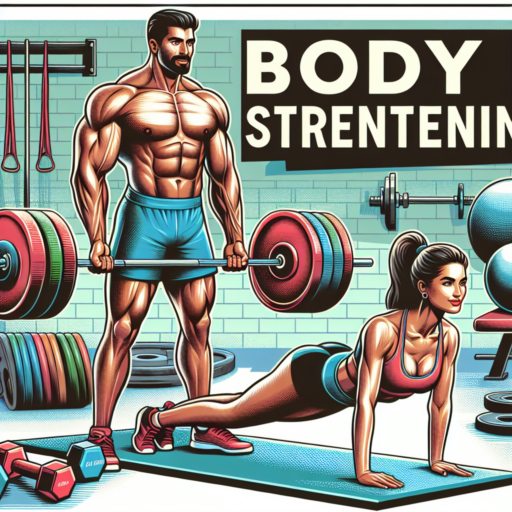Can plyometrics increase speed?
Understanding the impact of plyometrics on enhancing speed has garnered much attention in the fitness and sports science community. Plyometrics, consisting of high-velocity resistance training exercises, are designed to increase the speed and force of muscle contractions. This form of training, often involving jump training or explosive drills, targets the stretch-shortening cycle (SSC) of the muscles, which is crucial for sprinting and rapid movements.
The essence of plyometrics lies in its ability to improve neuromuscular efficiency, thereby potentially increasing an athlete’s speed. By simulating the quick stretch and contraction cycle of muscle fibers during plyometric exercises, athletes can enhance their power output. Power, being a direct product of both speed and strength, indicates that if one can increase their power through plyometric training, an increase in speed is possibly an attainable outcome.
Moreover, plyometrics have been shown to improve the reactive strength index (RSI) and explosive strength, which are paramount for athletes seeking to boost their speed. These exercises facilitate a quicker force production by the muscles, reducing the ground contact time during sprinting, and thereby potentially increasing the sprint speed. While plyometric training is beneficial, it is necessary to approach it with caution, ensuring proper technique and gradually increasing the intensity to avoid injury.
Is plyometrics good for sprinters?
Plyometrics, often referred to as «jump training» or «plyos,» involves exercises that encourage muscles to exert maximum force in short intervals of time, aiming to increase power (speed-strength). This training technique is particularly beneficial for athletes who rely on explosive movements, such as sprinters.
For sprinters, incorporating plyometric exercises into their training regime can significantly improve their start-off power and increase the speed at which they can sprint. These exercises are designed to enhance muscle elasticity and explosiveness, which are critical components for sprinting efficiently. By engaging in plyometrics, sprinters can expect to see improvements in their acceleration phase, which is crucial for a strong start in races.
Additionally, plyometric training contributes to improving running economy in sprinters. This is because these exercises enhance neuromuscular coordination and increase force production, resulting in more powerful strides with less energy expenditure. As sprinting is an activity that demands high-level performance in short periods, the efficiency gained through plyometric training can be a game-changer.
What are fast plyometrics examples?
Plyometrics, often referred to as «plyos,» involve explosive exercises designed to increase speed, power, and agility. These movements aim to stretch the muscles before a quick and powerful contraction, enhancing the functions of the neuromuscular system. Fast plyometrics, in particular, focus on rapid-fire actions that prepare athletes for quick responses and movements in their respective sports. Let’s dive into some examples of fast plyometrics that athletes and fitness enthusiasts can incorporate into their training regimens.
Jump Squats
Jump squats are a quintessential fast plyometric exercise that targets the lower body, specifically the quads, hamstrings, glutes, and calves. This movement not only improves leg strength but also enhances explosive power essential for sprinters, basketball players, and other athletes requiring quick, powerful jumps. The key to a successful jump squat is the rapid transition from the squatting position to the jump and then back to the squat, minimizing the time spent on the ground.
Burpees
Burpees are a dynamic, full-body exercise that combines a squat, push-up, and vertical jump. Renowned for their intensity, burpees are a staple in high-intensity interval training (HIIT) due to their ability to develop endurance, strength, and explosive power simultaneously. This fast plyometric exercise demands a seamless, quick movement from one phase to the next, making it an excellent choice for athletes looking to improve their overall athleticism and conditioning.
Plyometric Push-Ups
Plyometric push-ups, or clap push-ups, take the traditional push-up to a new level of intensity. By adding an explosive push that lifts the hands off the ground, often with a clap in between, these push-ups enhance upper body strength and power. Ideal for boxers, swimmers, and volleyball players, plyometric push-ups improve the quick, forceful movements these athletes often execute in their sports. The focus on rapid muscle contraction and extension makes this exercise a prime example of an effective fast plyometric movement.
Incorporating these fast plyometric exercises into a training program can significantly boost an athlete’s performance by enhancing their explosive power, speed, and agility. Each example targets different muscle groups and athletic skills, offering a comprehensive approach to plyometric training.
No se han encontrado productos.
How to increase speed and power?
Improving your speed and power is pivotal for athletes across various sports, from track and field to football, and even for individuals looking to enhance their general fitness. The route to achieving remarkable speed and power involves a combination of strength training, technique improvement, and specific drills designed to elevate your performance levels.
Strength Training Essentials
Building a solid foundation of strength is crucial for speed and power. Incorporating weightlifting exercises such as squats, deadlifts, and Olympic lifts into your regimen can significantly improve your muscle force output. Focusing on the lower body strength particularly enables your leg muscles to propel you faster and jump higher, thus directly correlating with speed and power enhancement. However, it’s imperative not to overlook the importance of core strength. A strong core stabilizes your entire body, allowing for more efficient energy transfer during movements.
Perfect Your Technique
Even with formidable strength, the efficiency of how you use your power dictates your speed. Technique optimization – whether it’s perfecting your running form, improving your swimming stroke, or refining your jumping mechanics – can lead to substantial improvements in performance. Engaging in drills that emphasize form and efficiency is essential. For runners, practicing high knees, butt kicks, and stride length drills can increase stride efficiency and speed. Likewise, athletes in other disciplines should work closely with coaches to identify and correct technical flaws.
Plyometric Training
Plyometric training, or jump training, is another effective method to boost your speed and power. Plyometrics improve your muscle’s explosive power by training them to exert maximum force in short intervals. Incorporating exercises like box jumps, jump squats, and bounding can lead to significant improvements in your ability to launch yourself faster and further. The key is to focus on quality of movement over quantity, ensuring proper form and technique with each repetition to prevent injury and maximize benefits.




